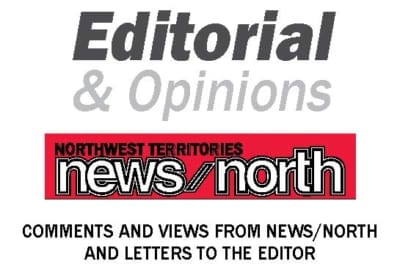The issue: Reconciliation
We say: Not a straight path
The horrors of residential school have been well documented. Canada's Truth and Reconciliation Commission worked from 2008-2015 to craft a 500-plus-page report and 94 calls to action to address these many miscarriages of basic human decency forced upon parents and children alike, while collecting nearly 7,000 first-hand accounts from survivors, family members and others.
However, a December 2019 report by Eva Jewell and Ian Mosby for the Yellowhead Institute found that only nine of the calls to action had been completed at that time. Combined with a pandemic and a federal government now more concerned with whether to call a snap election, it's doubtful much progress has been made since.
While the analysis did not grant a full distinction between partially completed actions and those that have not yet been started, this is particularly disturbing in that all the calls that have been met are what Jewell described as "cosmetic changes" in Canada's interactions with Indigenous peoples across the country.
There have been many apologies given, on local and national scales, both for the colonial actions taken by governments over Canada's 150-year history and from the Anglican and Roman Catholic churches.
In 2009, Bishop Murray Chatlain of Roman Catholic Diocese of Mackenzie-Fort Smith addressed Indigenous leaders in an emotional 11-minute speech in Inuvik. This apology was well received but there has yet to be an official apology from the Pope, and in 2019 Pope Francis said he could not personally respond.
Federal leaders have addressed the nation as a whole for the egregious actions taken during the years of residential school, including Stephen Harper in 2008.
There has yet to be any local admissions of guilt or visits to the NWT by federal leaders and that is overdue. The North's residential schools were open the longest and lasted until the 90s, leaving fresh wounds with many people. For that reason alone there should be special recognition and attention given to Northerners in the direct apology they are owed.
Some survivors like Margaret Leishman of Kakisa were not ready to forgive what was done through residential schools.
In a 2012 Truth and Reconciliation Commission meeting in Hay River she said "for what residential school did to me, to all our people, I cannot forgive," she said, adding she will probably go to her grave carrying her resentment. "No human deserved what they did to us."
This strong sentiment is the tip of the iceberg and further proof that more attention should be given directly to Northern reconciliation.
Call to action No. 21 calls upon the federal government to provide sustainable funding for existing and new Indigenous healing centres to address the physical, mental, emotional and spiritual harms caused by residential schools, and to ensure that the funding of healing centres in Nunavut and the Northwest Territories is a priority.
Some actions have been taken in recent years but it has mostly been Indigenous communities and leaders and communities that have taken steps toward healing.
Maggie Mercredi is an example of a strong figure working towards healing and educating others.
Through her home based businesses Ravenessence Consulting in Yellowknife, she has been using the Kairos Blanket Exercise to teach about the lasting effects of colonialism across North America.
Healing and on-the-land camps are another key piece to the reconciliation puzzle.
Listening to our Elders and their stories will help them to heal from the past as well as teach us how to move forward respectfully together.
Forgiveness is an important step to healing the wrongs of the past, but the path to reconciliation must be paved with concrete actions, and that falls squarely on the federal government.